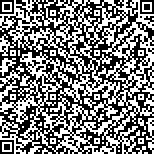彭娟,杨仕彬,胥方元,等.早期介入镜像疗法对缺血性脑卒中患者偏瘫肢体功能恢复的影响[J].中华物理医学与康复杂志,2019,41(3):178-183
扫码阅读全文

|
| 早期介入镜像疗法对缺血性脑卒中患者偏瘫肢体功能恢复的影响 |
|
| |
| DOI:DOI:10.3760/cma.j.issn.0254-1424.2019.03.004 |
| 中文关键词: 镜像疗法 缺血性脑卒中 康复治疗 |
| 英文关键词: Mirror therapy Stroke Ischemic stroke |
| 基金项目:2014年四川省科技厅课题(10,LY-89) |
|
| 摘要点击次数: 6380 |
| 全文下载次数: 6505 |
| 中文摘要: |
| 目的 观察早期介入镜像疗法对缺血性脑卒中后偏瘫患者上、下肢功能恢复的影响。 方法 选取病程小于1个月的36例早期缺血性脑卒中患者作为研究对象,采用随机数字表法将其分为观察组及对照组,2组患者均接受卒中后规范化药物治疗及常规康复训练。观察组在此基础上辅以镜像治疗,每次治疗45min,每周治疗5次,持续治疗3周;对照组则辅以与观察组相同时间、相同强度但无镜像反射面的运动训练。于治疗前、治疗后、出院后随访1个月及2个月时分别采用Fugl-Meyer运动功能量表(FMA)、Wolf运动评价量表(WFMT)、功能性步行量表(FAC)、Brunnstrom分期和改良Ashworth痉挛量表(MAS)对患者偏瘫侧上、下肢运动功能恢复情况进行评定。 结果 经治疗后2组患者肢体运动功能均较治疗前明显改善。与同期对照组比较,观察组经3周治疗及出院后随访1个月、2个月时其上肢FMA评分均明显改善(均P<0.05);与同期对照组比较,观察组出院后随访1个月及2个月时其WMFT评分也明显增高(均P<0.05)。与同期对照组比较,观察组随访2个月时其下肢FMA评分和FAC分级指数均明显进步(均P<0.05)。与同期对照组比较,观察组随访1个月、2个月时其上肢Brunnstrom分期也明显改善(均P<0.05),但下肢Brunnstrom分期与同期对照组间差异无统计学意义(均P>0.05)。与同期对照组比较,观察组患者经3周治疗后、出院后随访1个月、2个月时其上肢及下肢MAS评级指数均无明显改善(均P>0.05)。 结论 早期介入镜像疗法能明显加速缺血性脑卒中患者偏瘫侧上肢及手功能恢复进程,对患者下肢运动功能及步行能力亦有改善作用,该疗法值得在脑卒中患者中推广、应用。 |
| 英文摘要: |
| Objective To investigate the effect of early intervention with mirror therapy on hemiparetic survivors of ischemic stroke. Methods Thirty-six hemiplegic patients within one month after a stroke were randomly divided into a mirror therapy group (MT group, n=18) and a routine rehabilitation control group (RRC group, n=18). The participants in the MT group received MT for 45 min/d, 5 d/wk for 3 weeks in addition to conventional stroke rehabilitation. Those in the RRC group received exercise therapy at the same frequency without the mirror protocol. The Fugl-Meyer assessment (FMA), Wolf motor function test (WMFT), functional ambulation category scale (FAC), Brunnstrom stages of motor recovery, and the modified Ashworth scale (MAS) were used to assess changes in the upper limb, gross hand dexterity and lower limb recovery before and right after the interventions, as well as one and two months after the treatment. Results Significant improvement was observed in the limb function of both groups after the treatment. Compared with the RRC group, there was significantly greater improvement observed in the MT group. This was true of the FMA ratings at all time points, the average WMFT scores one and two months after the intervention, the FAC ratings two months after the intervention, and the Brunnstrom stages at both one and two months after the intervention. However, no significant difference between the two groups in terms of the average MAS scores was observed at any time point. Conclusion Early intervention with MT can significantly accelerate the recovery of a paretic upper limb and improve walking ability after stroke. Such intervention is worthy of promotion and application in clinical practice. |
|
查看全文
查看/发表评论 下载PDF阅读器 |
| 关闭 |
|
|
|